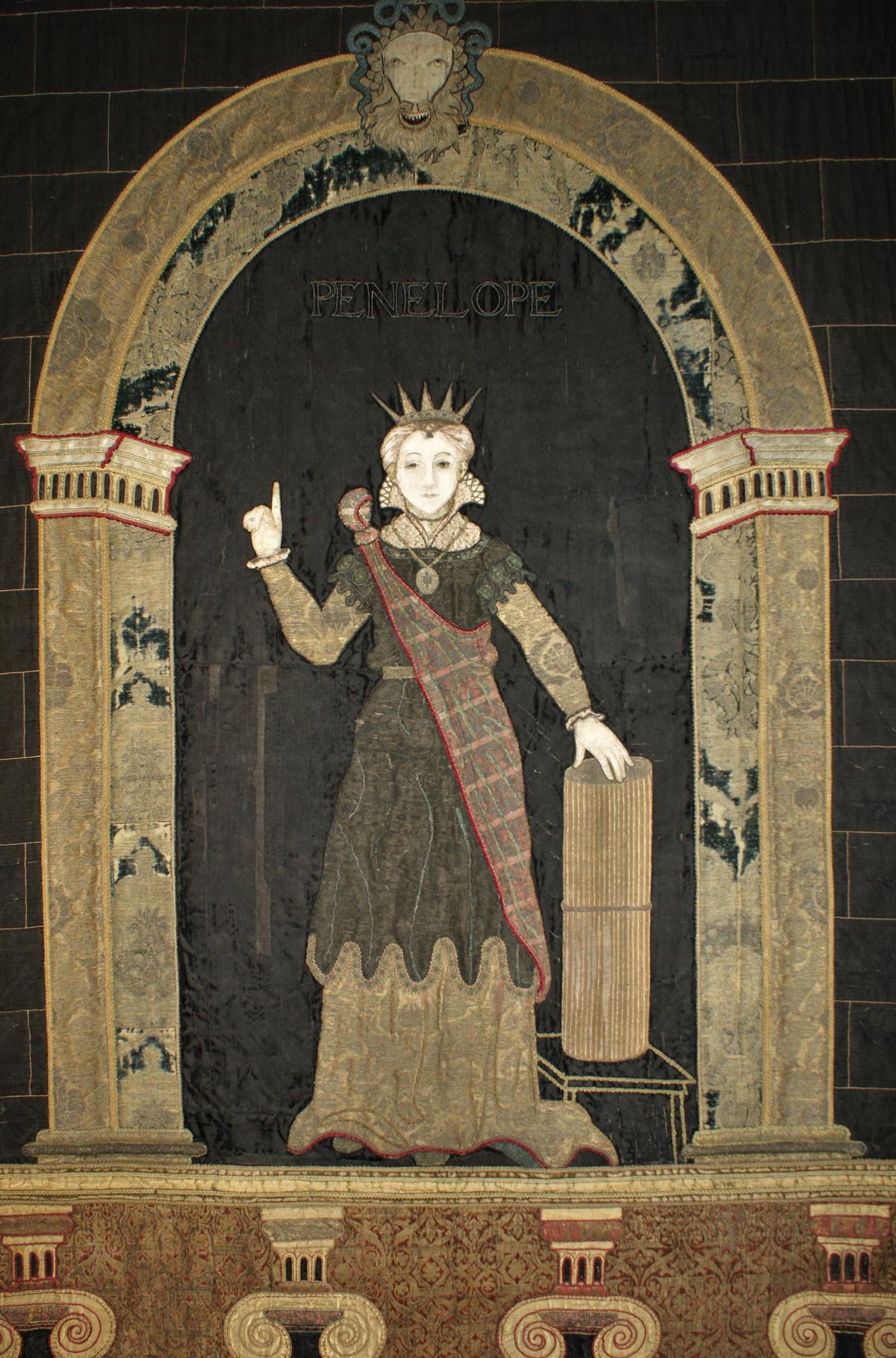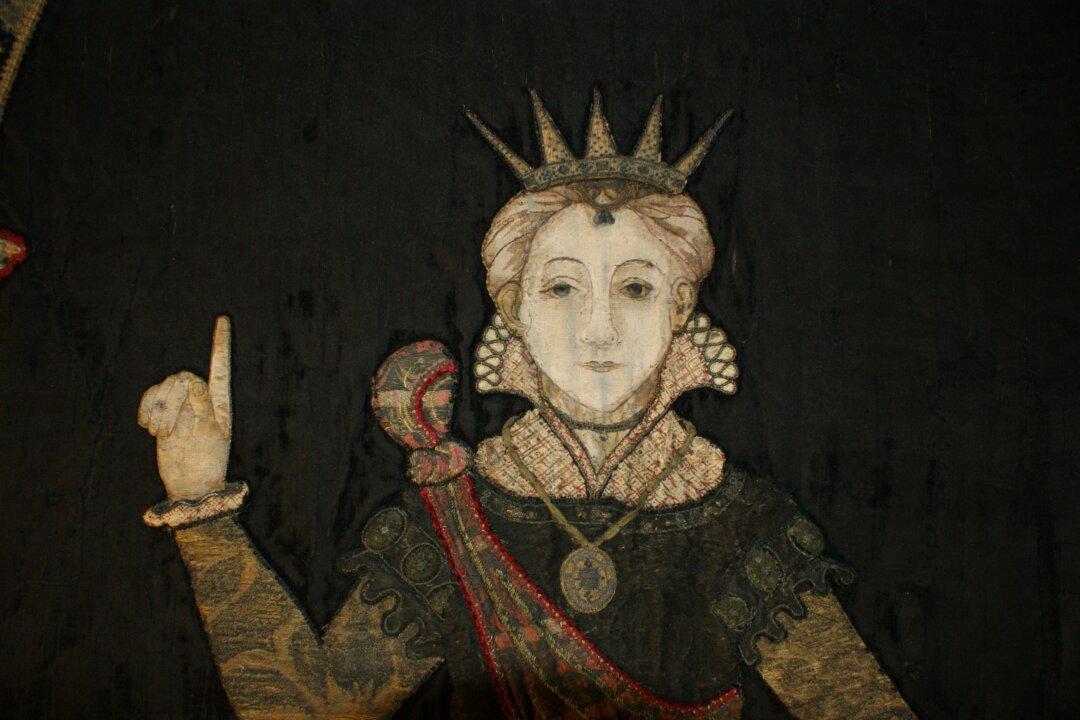On the top floor of Hardwick Hall, five wall hangings of noblewomen—Zenobia, Lucretia, Cleopatra, Penelope, and Artemisia—once adorned the high walls of Bess of Hardwick’s small private chamber. These women were not only of noble birth but also of noble character, bringing to mind all 16th-century womanly virtues.

During the English Renaissance, stories from the ancient world inspired many educated people. In the 1570s, five wall hangings of noblewomen, featuring five ladies and their allegorical virtues, were made at Chatsworth House, in England. Here is a detail of Penelope. Claire Hill/National Trust






